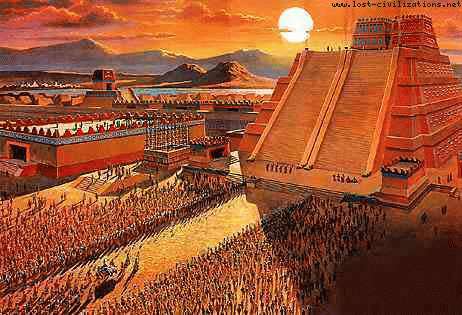
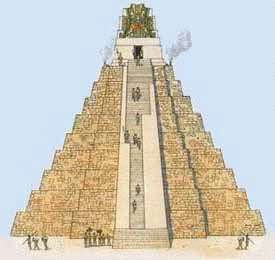
Deep within the jungles of Mexico and Guatemala and extending into the limestone shelf of the Yucatan peninsula lie the mysterious temples and Mayan pyramids.
While Europe was still in the midst of the Dark Ages, these amazing people had mapped the heavens, evolved the only true writing system native to the Americas and were masters of mathematics.
They invented the calendars we use today. Without metal tools, beasts of burden or even the wheel they were able to construct vast cities across a huge jungle landscape with an amazing degree of architectural perfection and variety. Their legacy in stone, which has survived in a spectacular fashion at places such as Palenque, Tikal, Tulum, Chichen Itza, Copan and Uxmal, lives on as do the seven million descendants of the classic Maya civilization.
The Maya are probably the best-known of the classical civilizations of Mesoamerica. Originating in the Yucatan around 2600 B.C., they rose to prominence around A.D. 250 in present-day southern Mexico, Guatemala, northern Belize and western Honduras. Building on the inherited inventions and ideas of earlier civilizations such as the Olmec, the Maya developed astronomy, calendrical systems and hieroglyphic writing.
The Maya were noted as well for elaborate and highly decorated ceremonial architecture, including temple-pyramids, palaces and observatories, all built without metal tools. They were also skilled farmers, clearing large sections of tropical rain forest and, where groundwater was scarce, building sizable underground reservoirs for the storage of rainwater. The Maya were equally skilled as weavers and potters, and cleared routes through jungles and swamps to foster extensive trade networks with distant peoples.
The Mayan pyramids of Teotihuacan rise as high as twenty-story buildings,above the central Mexican highlands with a grandeur and mystery that stirs the imagination and inspires the soul. As a civil engineer, I have often been intrigued by the surveying and construction skills of so-called primitive societies; this site is truly exceptional. All of the buildings are aligned with the stars and the solar system from precise survey points in the nearby mountain range, using an advanced understanding of mathematics, geometry and astronomy.
Little is known by traditional researchers about the pyramids of Teotihuacan (pronounced tay-oh-tee-wah-con, and simply referred to as "Teo" by the locals). Built bythe Toltecs, Teo was once a city the size of ancient Athens and Rome. It thrived as the primary center of learning and culture in America for over one thousand years, before it was abandoned about fifteen-hundred years ago.
According to legend, after the fall of Teotihuacan, two major paths of sacred knowledge formed. One Toltec path went to Tula near present day Hidalgo. The magic of Tula can be compared to what our culture might term "black magic." The generally more enlightened path called the Path of Freedom went south toward Xochicalco, near present day Cuernavaca, and also eventually went into hiding.
The term "Toltec" as used by the Aztecs (who came many years after the Toltecs) meant either a "great wise one" or a native healer or artist who followed a certain tradition; it was not necessarily meant to define a specific ethnic group. In fact there is evidence that Toltec society was a relatively harmonious blend of several of America's early native cultures.
The Olmecs and the builders of Monte Alban in Oaxaca, with whom the Toltecs traded, revered the Toltecs and regarded them as the most highly advanced society in religion, magic and art. Yet, unlike the art of other early American societies, Toltec art depicts only two gods: the earth goddess and the rain/sky god. The fact that Toltec art does not prominently portray many gods for worship, supports the belief, common throughout America for over one thousand years, that the Toltecs were able to communicate directly with the gods in the sun, the moon and the stars.
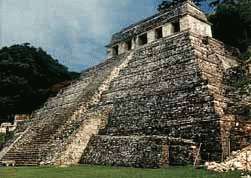 Mayan pyramid of Inscriptions at Palenque
Mayan pyramid of Inscriptions at Palenque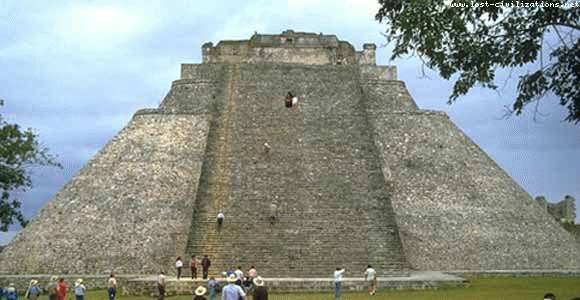 Mayan pyramid of the Magician at Uxma
Mayan pyramid of the Magician at Uxma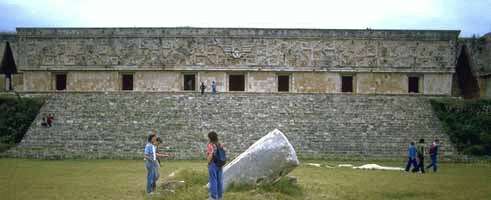 Palace of the Governors at Uxmal
Palace of the Governors at Uxmal In Tula, Mexico: Elevation; 6,500 feet.
This sites presents a five-terraced Tlahuizcalpantecuhtli Pyramid.
Tula is an ancient Toltec city.
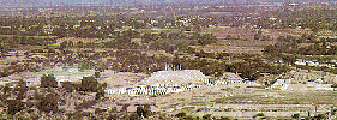
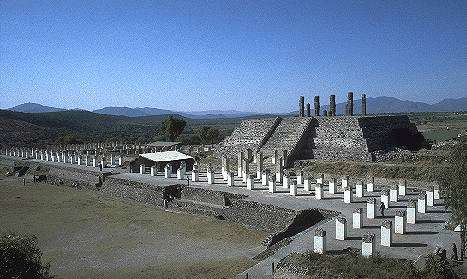
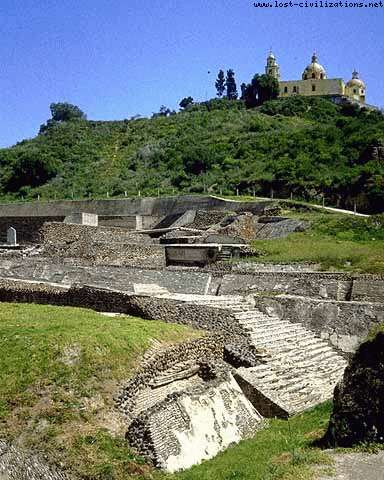
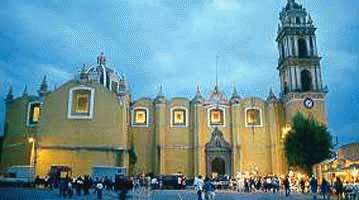
Three successively larger Mayan pyramids were built on top of each other here, and served important ceremonial purposes for the Aztecs. The last and largest pyramid was faced with stucco, which if not maintained turns back to mud. When the pyramid was abandoned, the stucco turned back to mud, and plants and eventually trees grew on it.
Historians think the Spaniards were not aware that they were building their church on top of an Aztec pyramid - perhaps they just built there because it was the highest hill in the area! However, it is very common, both in Mexico and in other cultures where belief systems have warred, to see buildings associated with one culture constructed on top of or from the rubble of buildings associated with the other culture.
In Izamal, for example, a large cathedral and courtyard are build on top of a lopped-off pyramid. In India, too, one can see mosques constucted from stones whose carvings show that they were originally part of Hindu temples.
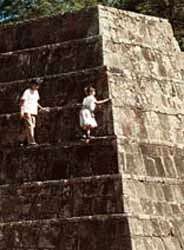
The great platform, measuring 425 by 250 meters would hold thirty soccer fields.
The name is said to mean "place abundant in hummingbirds", or if properly pronounced to sound like a hummingbird beating its wings.





















